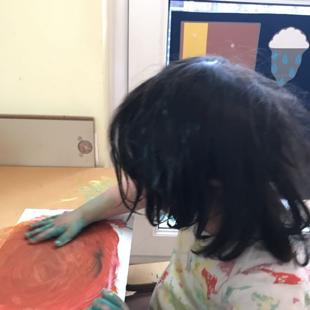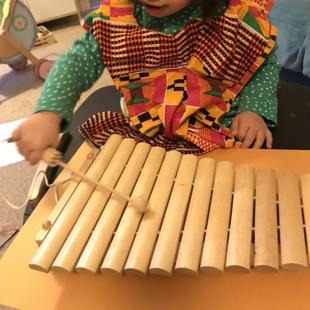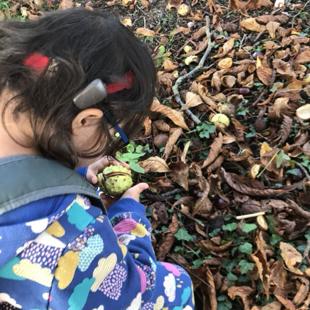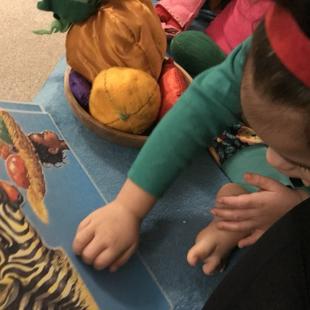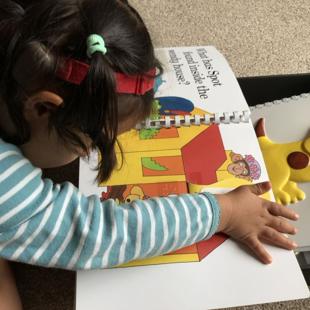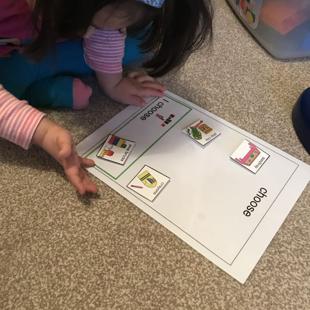These webpages have been developed by CambsEYC to support practitioners’ universal inclusive practice for all children. Children do not require a diagnosis or ‘label’ for you to make adjustments to support them. However, it can only be a reasonable adjustment if the initial expectations are also reasonable.
- A guide to SEND in the Early Years, Kerry Murphy.
- A Very Unusual Journey into Play, Ben Kingston-Hughes.
- A guide to neurodiversity in the early years | Anna Freud.
- Cambridgeshire and Peterborough Healthy Child Programme - Health Visiting and School Nursing Service.
- Children and Families Act 2014.
- Developmental Psychology & Early Childhood Education, David Whitebread.
- Disabled Children and the Equality Act 2010 - What Early Years providers need to know and do.
- Early Childhood and Neuroscience, Mine Conkbayir.
- Early years child development training: Brain development and how children learn.
- Early years child development training: Supporting individual differences and needs.
- Early years foundation stage (EYFS) statutory framework - UK.
- Equality Act Guide for EY - pdf Size: 26.5MB File format: pdf
- Potty training: how to start & best age to potty train - ERIC.
- Inclusive Education - Including children with disabilities in quality learning Size: 280KB File format: pdf
- SEND Support: Resources.
- Supporting Positive Interactions.
- TA_Recommendations_Summary.pdf Size: 1,317KB File format: pdf
- Making sense of Neuroscience in the Early Years, Sally Featherstone.
- National Center for Pyramid Model Innovations.
- Understanding child brain development | NSPCC Learning.
- What is meant by PACE? - DDP Network.
- Parklands, Chris Dyson.
- A Celebratory Approach to Working with Children with SEND | Pen Green Children's Centre.
- Reasonable adjustments - Mind.
- Reasonable adjustments: a legal duty - UK.
- Schemas for Parents Booklet 2021 v01 kidsdawntildusk.co.uk. Size: 405KB File format: pdf
- Special Education Needs in Mainstream Schools guidance report | Education Endowment Foundation Size: 7065KB File format: pdf
- Equality Act 2010.
- SEND code of practice: 0 to 25 years - UK.
- Theory of Mind – Child won't say sorry? Don't use force, try this instead — mellownest.
- There’s No Such thing as Naughty, Kate Silverton.
- When the adults change, everything changes, Paul Dix.
Business planning:
- Business insights from successful early years providers - UK
- Homepage | Childcare Choices
- Grants for families | WellChild
- Dingley's Promise: Business Planning for inclusion - slides with audio - childcareworks.org.uk
Try our CambsEYC toolkits:
- Assessment.
- Wellbeing.
- SEND.
- Environment.
- Transition.
- Quality Framework for Settings.
- Quality Framework for Schools.
Located on Knowledge Hub:
|
ACES (Adverse Childhood Experiences) |
Highly stressful, and potentially traumatic, events or situations that occur during childhood and/or adolescence. They can be a single event, or prolonged threats to, and breaches of, the young person's safety, security, trust or bodily integrity. |
|
Co-Regulation |
The nurturing connection of another person that supports regulation using strategies, tools, and calming techniques. |
|
Dysregulation |
When someone is unable to regulate their own emotional response. They are overwhelmed and unable to manage or control their reactions. |
|
Equality |
Everyone should have an equal chance to learn without being treated unfairly because of things like their skin colour, gender, religion, where they're from, how much money they have, or anything else. It's about making sure all children get the help and things they need to do well. |
|
Equity |
Each child receives what they need to develop to their full academic and social potential. |
|
Executive function |
The mental processes that enable us to plan, focus attention, remember instructions, and juggle multiple tasks successfully. Just as an air traffic control system at a busy airport safely manages the arrivals and departures of many aircraft on multiple runways, the brain needs this skill set to filter distractions, prioritise tasks, set and achieve goals, and control impulses. |
|
Inclusion |
Everyone’s needs are taken into account, and all learners participate and achieve together. What is inclusive education? ALLFIE (the Alliance for Inclusive Education). |
|
Limbic system |
A group of interconnected brain structures that help regulate your emotions and behaviour. The limbic system monitors the environment for safety and danger and is also the source of some of our strongest social and prosocial urges. |
|
Masking |
The act of suppressing or concealing neurodivergent traits in schools and the workplace to appear neurotypical. |
|
Neurodiversity/ Neurodivergence |
When someone's brain processes, learns, and/or behaves differently from what is considered "typical". Neurodiversity is the idea that the way we think is not always the same. Some neurodiverse conditions include autism spectrum condition, dyslexia and attention deficit hyperactivity disorder. |
|
Neurotypical |
Someone not displaying neurologically atypical patterns of thought or behaviour. |
|
Quality First Teaching |
A style of teaching that focuses on high-quality and inclusive teaching for every child, ensuring that each pupil receives teaching that suits their learning style. |
|
Pedagogy |
The method and practice of teaching. |
|
Schemas |
A schema is a pattern of repeated actions. Schemas are often described as children’s fascinations. There are many different types. |
|
Self-regulation |
The ability to manage your own behaviour and aspects of your learning. |
|
Theory of Mind |
The understanding that other individuals have mental states, such as knowledge, intentions, and beliefs. |

